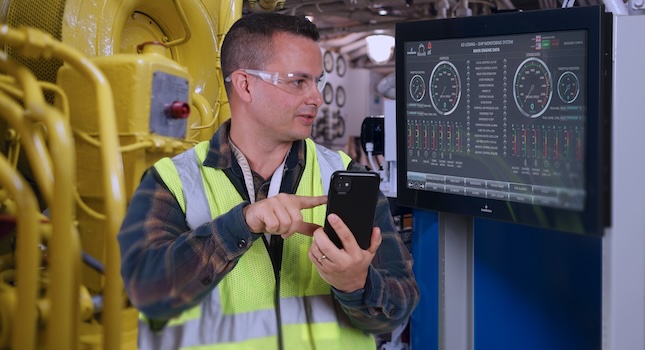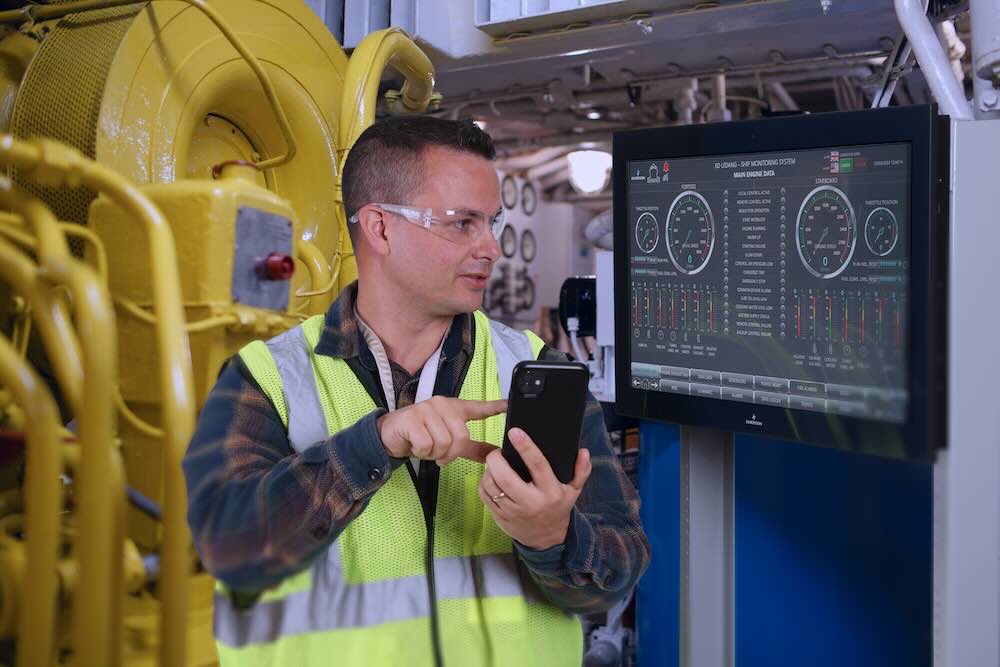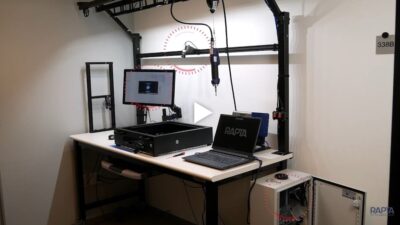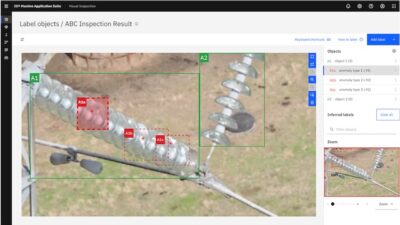Carefully curated AI, when integrated on a comprehensive industrial automation platform, will accelerate the way users develop, deploy and optimize manufacturing and processing operations.

Learning Objectives
- Understand the potential and limitations of gen AI tools in creating various types of content and their impact on perceptions of human intelligence and employment.
- Explore the role of subject matter experts in amplifying the effectiveness of Gen AI technologies, particularly in complex industrial automation tasks.
- Identify strategies for integrating gen AI into industrial automation to optimize efficiency and productivity without compromising safety or reliability.
Gen AI insights
- Generative AI is poised to significantly enhance industrial automation by helping experts manage and analyze extensive data more effectively, thereby improving productivity and decision-making.
- The adoption of AI in critical industrial operations requires cautious integration and skilled oversight to mitigate risks associated with inaccurate AI-generated outputs.
- Strategic implementation of AI involves utilizing scalable platforms and sophisticated programming techniques to empower subject matter experts and streamline automation processes.
The hype around ChatGPT, Bard, Bing Chat and other generative artificial intelligence (gen AI) tools is increasing. The stated promise by AI tool promoters is that untrained users can exercise the tools to create written content, computer code and even legal documents. An industrial gen AI strategy should include skilled personnel with automation or application expertise (or both) to carefully consider scalable platforms, open programming and abstraction along the way, without the implied message that AI will displace human intelligence.
For now, AI tools are free or low cost. They show great promise creating “soft” content for non-critical use, and even in performing detailed tasks, like taking tests. On the other hand, the results can sometimes be misleading or incorrect. When Microsoft corporate vice president Jared Spataro introduced that company’s 365 Copilot AI tool, he asserted that “sometimes Copilot will be right, other times usefully wrong — but it will always put you further ahead.”
Anyone considering the application of AI to industrial-grade, always-on, mission-critical work should rightfully be concerned regarding incorporation of a “usefully wrong” tool into their workflow, while still expecting to deliver necessary and reliable results. In an open-source world, people and companies using Gen AI may ultimately remain liable for any negative outcomes, even if a deep-pocketed and well-counseled AI provider is named as a co-defendant.
Before answering the question of how to effectively apply artificial intelligence within the context of industrial automation, first consider what intelligence is, and how to value it. There is a path forward, and careful use of Gen AI can accelerate industry in the right direction.
The mark of intelligence
From early on, intelligence was characterized by what a person knew. Knowledge supporting their intelligence was gained primarily through the study of books and written materials, at a great cost in time and money, and this gave scholars a degree of power.
With the ascendence of the internet a few decades ago, the formula changed. Suddenly, pure data became very inexpensive to obtain, though still retaining intrinsic value (Figure 1). With volumes of data and facts now accessible to anyone online, the definition of intelligence shifted toward the ability of a person to find the best sources of data, make sense of it and synthesize it into useful information and insights. Regardless, the accuracy of this source data required vetting — which had also been the case with books — because false assertions still existed.

In many ways, the ubiquitous and widespread availability of data is too much of a good thing. The constant onslaught of new information from an increasingly diverse set of sources and voices makes it difficult for humans to find the needles in the data haystack. An overabundance of data can obscure what is most useful or important, and a lack of reliable tools to vet new data sources blurs the line between truth and fiction. We may believe the responses generated by gen AI tools simply because we do not have the background or resources to know better.
An increasingly important mark of intelligence is discernment. Discernment first takes the form of knowing what question to ask. The internet is full of examples of people asking simple questions to gen AI tools only to receive answers that completely miss the mark. Discernment also means being capable of looking at an AI-generated response and using knowledge and experience to understand if the answer is correct, “usefully wrong” or even dangerous. Discernment has always been a valuable skill with regards to intelligence, but the accelerating expansion of raw data and the rapid rise of gen AI tools to fish insights from that vast ocean makes this form of intelligence more critical than ever. What gives someone good discernment? A simple definition of discernment could be experience applied over knowledge — in other words, subject matter experts (SMEs).
Amplifying industrial automation experts with gen AI
Technologies like gen AI will take the evolution of intelligence to the next level, helping users more effectively access and interact with massive quantities of data. Casual users can benefit from this in myriad application-specific ways. For example, they can use AI-powered navigation tools to sift through mountains of geographical data and provide real-time directions to their destinations along the best route. SMEs, with highly developed discernment skills, can make much more extensive use of gen AI because, although greater data access does not create experts, access absolutely amplifies their efforts.
Just as a wrench is a force multiplier for a technician tightening a bolt, gen AI is a force multiplier for an SME investigating an issue. Conversely, some see adopting the use of gen AI more like a lumberjack switching from using a handsaw to using a chain saw — there is great capacity for productivity increase, but also a greater danger when used by unskilled hands.
Manufacturing and processing organizations seeking to optimize design, operation and maintenance efficiency need to consider how to best support their SMEs (Figure 2). Instead of looking at gen AI as superseding experts and expertise, it will be important to embrace SMEs and equip them with AI to accelerate their work. Companies investigating how to use gen AI for industrial-grade projects need to consider several points surrounding the training of gen AI models, and SME interpretation of the results.

Gen AI models available today are largely trained on datasets or other information generally available and scraped from the internet. This bulk-data may be helpful for training large language models (LLMs), such as ChatGPT, for generating general prose.
For more specific projects such as performing an industrial automation design or optimization activity, using a training data set carefully curated by SMEs would likely produce the most consistent and effective gen AI. While limiting training data to relevant sources may introduce some risk of missing deeply hidden insights, the reward is obtaining more reliable results and avoiding potentially reasonable-looking results that are dangerously wrong due to flawed sources.
Once results are obtained, the SME still needs to carefully audit the output. One can imagine that a gen AI model used to create non-critical end products such as art or entertainment would have a relatively low probability of causing liability in the form of injury, physical damage or environmental degradation. But a gen AI model used to design a piece of production equipment, or the code to automate a machine, or even to suggest values to optimize operation, could result in a potentially poor outcome, with very serious consequences.
Within Emerson, some exploratory work using gen AI for industrial automation work has revealed that, for complex tasks, the net speed improvement was not much better than with traditional methods. On the other hand, gen AI used in the hands of an SME can greatly accelerate mundane or repetitive tasks. This prompts the question: what will be the best way to increase useful gen AI adoption for industrial automation?
An industrial gen AI strategy
Even as industrial automation technologies have improved over the decades, from a performance and a usability perspective, the vision of enabling even semi-skilled resources to automate a factory or processing plant efficiently and accurately is still in the distance and perhaps always will be. Skilled personnel, with automation or application domain expertise or both, are still needed to bring these projects to fruition. Technologies emphasizing easy to use, however, can greatly expand the pool of those qualified to do the work as we move forward to fulfill the vision.
In the meantime, there are some powerful easy to use capabilities that users should consider to free up time and resources for exploring gen AI technologies, such as:
Scalable platforms: Most users require a spectrum of device, hardware and software options so they can deploy solutions seamlessly from floor to cloud (Figure 3); that is, in the field, at the control room, and throughout the enterprise. The best way to achieve this is to build on a complete and proven open platform of sensors, instruments, automation controllers and software for human-machine interface (HMI), supervisory control and data acquisition (SCADA) and analytical operations. When devices integrate intuitively and seamlessly into an automation ecosystem, problems are solved faster, and value is achieved sooner.
Open programming: Industrial automation covers many aspects, including instrumentation and measurement, direct control of field devices, data acquisition and historization, visualization, analytics and much more. To best use expertise from this range of disciplines, flexibility in programming can speed development and ease integration. While straightforward control algorithms might best be realized in traditional programming languages like ladder diagram (LD), the automation of more specialized devices such as servo motors and high-precision actuators may benefit from more modern languages such as structured text (ST). The vast majority of internet of things (IoT) algorithms for teasing insights out of sensor data are commonly written in C, C++ and Python, often optimized for Linux operating environments. Working with an automation platform offering intrinsic support for traditional IEC industrial languages as well as modern standards like C, C++ and Python can be the difference between struggling to make a solution function and blazing toward greater efficiency.
Abstraction: A key goal of integrating AI and other advanced technologies into the industrial automation space is to abstract the process, so an average user or developer will interact at a higher level with logical building blocks, instead of needing to dive into the deepest details of the source code. Modern automation programming tools can incorporate key aspects of abstraction even without AI. Implementers should look for development tools providing the ability for variable programming and data tags and the ability to create user-defined data types. They should look for tools supporting code reuse with an application repository and user-defined function blocks in all supported programming languages.

With productivity enablers like these in place, users can spend more time exploring new technologies like gen AI and other advanced technologies in their own environments to better understand what might deliver the gains and enhancements they seek. Partnering with automation experts may open users to new ideas and opportunities they had not considered possible, and they may even uncover turn-key solutions to common problems.
The end goal is empowering users to leverage their industry expertise and incorporating AI in the most useful ways, to help end users increase their productivity when deploying and optimizing manufacturing and production solutions.
Darrell Halterman is director of PACSystems Controls and Compute Portfolio at Emerson’s Discrete Automation business. Edited by Tyler Wall, Control Engineering associate editor, [email protected].




